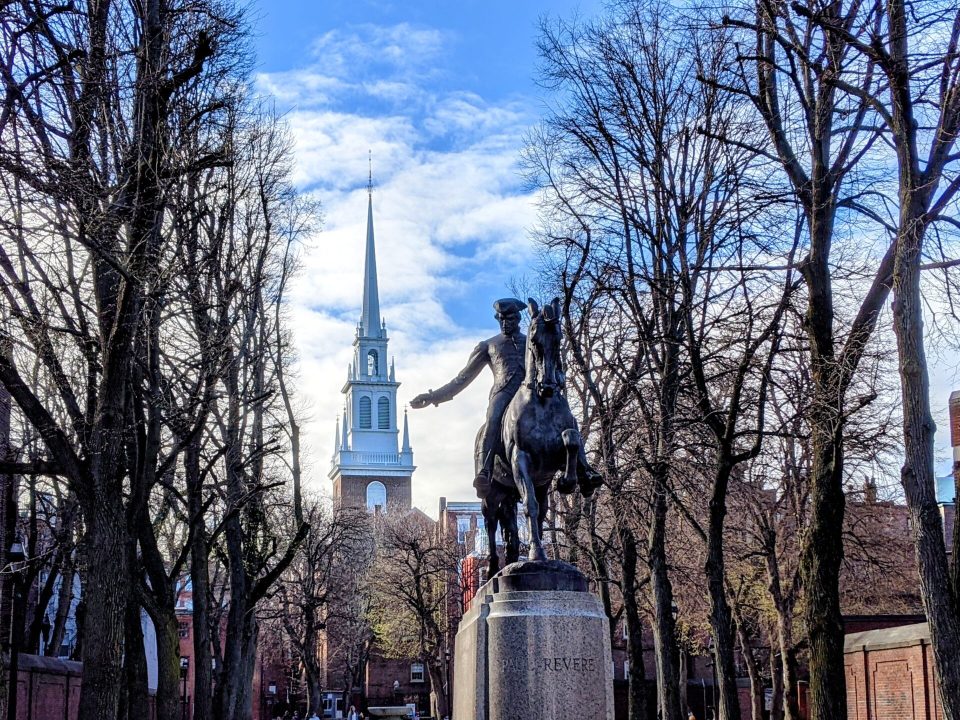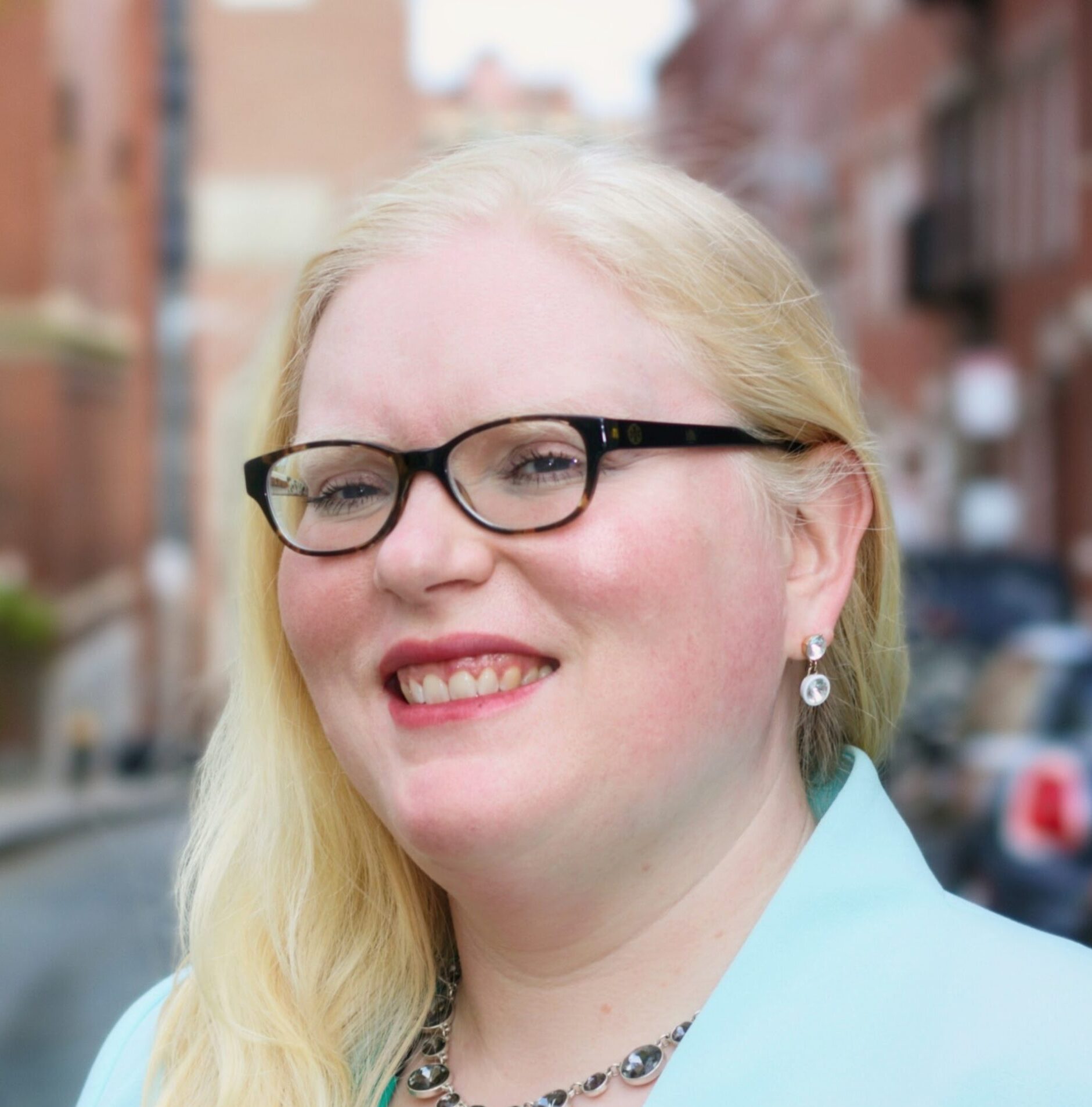
The enduring fame of the Old North Church in Boston began on the evening of April 18, 1775, when church sexton Robert Newman and vestryman Capt. John Pulling Jr. climbed the steeple and raised two lanterns as a signal that the British were marching to Lexington and Concord across the Charles River, and Paul Revere embarked on his journey. This fateful event ignited the American Revolution. In 1860, with our nation on the brink of the Civil War, Henry Wadsworth Longfellow penned “Paul Revere’s Ride” to rally readers behind the abolitionist cause with the tale of a hero who bravely stepped forward to change the course of history, cementing the story in the country’s imagination.
But this famous legacy has obscured another fact of the site’s history. Old North Church was built by and for a wealthy congregation that included many sea captains and merchants, and funding for various aspects of construction traces directly to the products and proceeds of enslaved Africans’ labor. The site’s connection to human trafficking and enslavement is complicated, as we also have limited records of enslaved congregants who worshipped at the church. But a new discovery in 2016 revealed deeper ties than we previously knew.
This discovery centered on Newark Jackson, a chocolatier and sea captain who was one of the early congregants of the church. Jackson was initially the namesake for our very popular historic chocolate program and shop, “Captain Jackson’s Historic Chocolate,” which provides multi-sensory demonstrations that humanize the past and demonstrate how Old North operated within the Atlantic commercial world.
In 2016, the historian Jared Hardesty published the book Unfreedom, in which he refers to Jackson’s probate inventory, which shows that he enslaved people of African descent. Further research over the next several years revealed that Jackson was murdered in a mutiny, a fact that generated a historical trail of legal claims and paperwork culminating in the horrific discovery that at the time of his death, Jackson was transporting fifteen enslaved individuals, thirteen of whom appear to have been children.
While Jackson was the center of this initial discovery, we now know he was only one part of a group of smugglers, merchants, and slave-traders who had a social nexus at Old North Church and were very influential in shaping the building and congregation. These ties to enslavement stand in stark juxtaposition to Old North Church’s identity as a symbol of liberty and the site of one of the most iconic acts of protest in our nation’s history—an act that launched a revolution but failed to bring full citizenship to people of color and women, or freedom to the enslaved.
For the Old North Foundation, which manages the site, this discovery prompted a period of intense reflection and questioning of the church’s broader connections to enslavement, as well as the identities and experiences of our early free and enslaved Black congregants.
As a result, in late 2020 we entered a strategic planning process, facilitated by Paper Crane Associates and funded by the National Park Foundation, aiming to expand our site’s programming, interpretation, and identity in ways that authentically and honestly present a fuller picture of our past and inspire a more equitable future.
The foundation of the plan is a new mission: The Old North Foundation inspires active citizenship and courageous, compassionate leadership by interpreting and preserving the Old North Church & Historic Site. To kick off the five-year plan with substantive actions, we are embarking on the following:
Curricula Development (Summer 2021)
To achieve our intended outcomes, we must substantially expand our curricula and enrichment materials for schools across the country. We are well-positioned to develop multi-disciplinary packages that combine history, civics, English language arts, social emotional learning, and more. This summer, consultants have been engaged to develop curricula at the fifth-grade and high school levels which will explore colonial chocolate and the cacao trade as a lens for understanding eighteenth-century trade, labor (including skilled enslaved labor), ethics/economics, and cross-cultural influence.
Audience Evaluation Survey (August-October 2021)
The Old North Foundation is working with People, Places & Design Research to conduct an audience evaluation study to better understand the baseline knowledge of our visitors, their motivations for visiting, and their receptivity to new themes and stories such as the experiences of our Black congregants and the role of Longfellow’s poem “Paul Revere’s Ride” in the abolition movement. Understanding our audience will be critical to successfully presenting these topics, which will require challenging and at times painful reflection about our country’s history.
Interpretation Plan (October 2021-June 2022)
Old North Church & Historic Site has multiple physical spaces, and with them multiple interpretative themes and offerings that have evolved independently of one another. To bring these more in line with each other, we have engaged consultants Kristin Gallas and Nicole Moore to develop and implement a site-wide interpretation plan that traces the theme of active citizenship from the church’s founding in 1723 to present day, weaving together the seminal story of Paul Revere and other examples of civic engagement with an in-depth exploration of the paradoxical truth of Old North Church’s complicated history with slavery. The site-wide plan will create a blueprint for how different stories can be told throughout the campus in a cohesive and balanced way that will enhance and strengthen the visitor experience while amplifying the impact of each visit.
Evolving our interpretation is essential for engaging a more diverse audience and connecting with local residents. The famous lantern signals, and the context in which they occurred, will always be central to our interpretation and education. But they are just one part of a rich three-hundred-year history we can draw on to tell a unique narrative of the enduring struggle for a more perfect union. Our position as a respected historic site grants us both authority and responsibility to engage audiences in reflection about the role of active citizenship in their own lives and communities. As our own site’s history shows, denial of citizenship and denial of human rights is part of the story of this land from the colonial era onward. By engaging with aspects of our history that are challenging and uncomfortable, we can help visitors see the threads that connect historical and contemporary experiences of citizenship. We can also empower our visitors to see themselves as vital to the pursuit of a more equitable and just society.
Exhibit Planning (2022)
To renovate and utilize a large outdoor garden area, we have engaged 106 Group to design an outdoor exhibit that explores active citizenship through a critical examination of Longfellow’s “Paul Revere’s Ride,” a poem and story that is familiar to many of our guests. Many are surprised to learn that the poem was written after Longfellow visited Old North, and that the poem was intended to rally support for the Union and abolitionist causes. We will look at poet and poem as entry points for considering how the founding ideals of freedom and citizenship collided with the reality of slavery and limited citizenship during the mid-nineteenth century, and how that collision impacts present-day America. We will also ask how Longfellow’s experience of active citizenship compared to that of other nineteenth-century Bostonians, including the Black abolitionists who influenced him.
The guiding light of our new strategic plan is a big vision: The Old North Foundation envisions a future in which everyone will see their stories, struggles, and hopes reflected in places of prominence and our shared American history. The work begins at home, and we are doubling down on programming and interpretation that allows all Bostonians to see themselves at Old North Church. As we approach the three-hundredth anniversary of the church’s founding in 2023, and the two-hundred-fiftieth anniversary of the lantern signal in 2025, we are excited for an evolution that solidifies our site’s legacy and charts a future in which all are welcome, engaged, and inspired.








